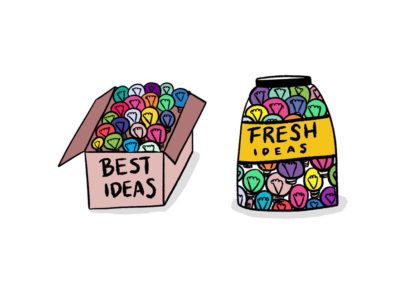In a world where globalization and innovation have taken the first seats, innovation has become a trendy concept for the private and public sectors. Innovation is necessary in a world that evolves at a pace that sometimes exceeds the capacity for us as humans to digest it. A word that can be understood and conceptualize differently, depending on the scenario where it is applied. We could say that the general approach to the term is a way to find new solutions to specific problems that add value in some way.
The MIT (Massachusetts Institute of Technology) defines Innovation as “something that generates value for the world. It makes something faster, better, cheaper. An invention is an idea, a technology, a patent.”
According to Ivan Patelli, Innovation Specialist at the IDB, in the public sector, there are more people realizing that what they were doing until now, was not enough. They know that something needs to change and that is why they are approaching innovation. “If you go to the ’80s and ’90s sometimes there was this big focus on efficiency. Being more efficient and doing better what you already do. But in some cases, people and organizations realized that efficiency will not let them so far. They need to do something different. And I see this a lot in the international development field. But innovation needs commitment needs being open to things going bad, and it’s hard because nobody likes to fail”.
Innovation is aligned with creativity, curiosity, risk, failure. All ideas that neither governments nor some corporations are willing to try. Some of these values represent the opposite of what these organisms are. So allowing the practice of innovation is an exercise of innovating for themselves. And one of the companies that excels in innovation is IDEO.
IDEO is one of the most recognized and known design innovation companies in the world (according to Business Week and fastcompany.com). It was founded in 1991 by David Kelly, with a very distinctive approach: apply human center design and design thinking philosophy to solve problems. They have mastered the use of design thinking to a level that sometimes it seems they created the concept, but they didn´t. Tim Brown, CEO of the company describes the process: “to design well (or find solutions to different problems) it requires attention to context and consequences. An elegant and effective solution doesn’t exist in isolation but in connection with the systems that support it, and that it in turn supports. It’s this outlook that informs our deep research process and necessitates prioritizing human needs and listening to human voices on the way to design innovation.”

IDEO´s approach to innovation has evolved with the years and they went from designing actually objects and strategies, to design for social development. Under their umbrella IDEO.org, they had created a methodology to find solutions to answer questions like: can governments be more citizen-centered? or how can design improve the lives of people in poor and vulnerable communities?
There are also some foundations that are exploring this same “innovation paths”. The Gates Foundation is another good example of having a human design center mindset that can foster innovation for development. Among different projects, they created the “Reinvent the Toilet challenge” as a way to find solutions to the sanitation problems from an open and creative perspective.
Innovation sometimes gets mixed with the concept of technology. Because technology implies innovation itself. From Mr. Patelli’s point of view, we can have innovation without technology, but scaling without technology is not possible. “I think technology in it´s most epistemological sense is inherently innovative. Whenever there is a new need or a new market, they’re going to invent something. He said that there are people who are really doing innovative work; sometimes you see a teacher in a public school applying a cool way of teaching kids math and they are really learning. That’s a novelty. That’s super cool. But sometimes we think that an app it’s cooler than that, that is what happens with innovation and technology”.
So with social issues, if we apply human center design techniques, we can have more solutions aligned to users. Some governments, international organizations, and foundations are trying to do it. Mr. Patelli explained that there are a lot of governments investing in experimentation and developing the concept of “government labs”. “You can see innovation being applied in these ecosystems and these parts of our countries and societies that are more structured. For them, it is kind of learning a new language, but it is necessary”. He adds it is a challenging task to understand the world from a different view that is more connected with creativity. But governments need to be more open to innovation and finding solutions from different perspectives.
For Tim Brown, IDEO´s Ceo, new applications of human center design are going to rise with the planet and society facing new challenges.
“The voices and needs of the individuals within those systems are what guide this design thinking process and shape the outcome. By approaching our work this way, we develop solutions that are deeply impactful and long-lasting. They belong to the people for whom they were designed, not to us.”
From IDEO Design Thinking – New Applications

